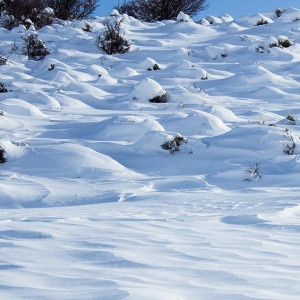 Days are growing longer, and spring is fast approaching. But for us mountain dwellers, winter isn’t going anywhere anytime soon. While temperatures rise around the country, and plants and animals awaken from their slumbers, up here in the high country, there is still potential for a significant spring storm.
Days are growing longer, and spring is fast approaching. But for us mountain dwellers, winter isn’t going anywhere anytime soon. While temperatures rise around the country, and plants and animals awaken from their slumbers, up here in the high country, there is still potential for a significant spring storm.
During March, temperatures in the southwestern US increase, and this helps feed in moisture from the Gulf of Mexico and Pacific, bringing plentiful storm energy to Colorado. Warmer air can hold more moisture, and when it arrives, it is met with higher latitude and altitude, thus colder temperatures. This warm, moist air in the atmosphere colliding with cold air masses over the state has the potential to drop some serious snow.
While most storms throughout winter follow a west-east direction across the state, in the spring, we often see storms develop over southeast Colorado, bringing more snow to areas east and along the continental divide. In what’s called an easterly upslope, moisture is pushed up against the eastern side of the continental divide. As that moisture builds up and is lifted over the foothills, it cools and condenses rapidly. The atmosphere can no longer hold that moisture, and it falls to the ground in the form of snow, as long as temperatures are cold enough.
For this reason, March is Denver’s snowiest month. In fact, in 2003, on the first day of spring, the city woke up to 32 inches of snow, with up to seven feet in the foothills! A low pressure system in southeast Colorado was fed by moisture and warm air from the Gulf of Mexico and the Pacific, creating the ingredients for a perfect storm. The state’s record for 24-hour snowfall occurred in April, 1914, when 76 inches fell at Silver Lake, in Boulder County.
While these storms brought significant snow to areas east of the Continental Divide, areas to the west saw little accumulation. The Divide acts as a wall, so depending on where a storm hits, one side of the divide could see a huge snowstorm, while the other could be warm and sunny.
So what does this mean for us powder hounds west of the divide? We must keep our fingers crossed that the storm tracks stay in a west-east direction, building up moisture and upslope west of the divide. While Denver may be enjoying a 60-degree and sunny day, we might be making soft turns in fresh powder.
When we do get spring dumps, you’ll need to get after it early. That fluffy powder by morning could turn into a thigh burning butter by afternoon, and a knee shattering layer of crust by the next morning. Unlike during our winter months, in March and April, days are longer, and the angle of the sun increases radiation at the ground. Temperatures can increase more rapidly, making the snow soggy with moisture as it melts, only to freeze overnight.
So get out there early and often, enjoy these longer days, and do whatever snow dance you do to make for a powdery end to the season!
Author Rob Cooper is a naturalist at Walking Mountains Science Center, in Avon.








